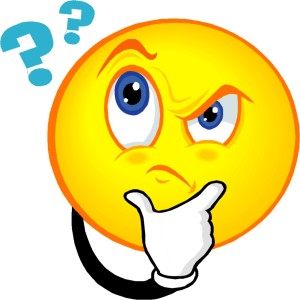[GUEST POST] What's the Best Motivational Theory?

 There is an ongoing discussion about which of the motivational theories is more (or less) valid, applicable or descriptive. But to start with, let’s have a brief overview of some of the known motivational theories around.
There is an ongoing discussion about which of the motivational theories is more (or less) valid, applicable or descriptive. But to start with, let’s have a brief overview of some of the known motivational theories around.
Conceptually speaking, motivational theories fall into two broad categories: content and process. Content theories of motivation analyse the “what“ behind motivation, and process theories focus more on the “how“ of motivation.
The most famous of the content theories is the by-now classic Maslow’s theory.
- Maslow’s Hierarchy of Needs theory tells us about what people need (from basic physiological ones such as hunger to belonging to a group to self-actualization), and these innate needs are what motivate/drive people to action. Maslow’s need theory is the carrot and the stick theory of motivation.
Since recently, most popularized of the process theories is Csikszentmihaly’s Flow.
- Csikszentmihaly’s Flow postulates that people enter state of flow (bliss, happiness) when they are fully immersed in an activity during which they lose their sense of time and have feelings of great satisfaction.
We will elaborate more on the theories of content/process motivation in the upcoming posts.
Most theories agree on few basic premises: humans have basic and other needs/wants/aspirations. Understanding and catering to those will motivate humans to act. Some of the motivational theories are blatant about needs and carrots-n-sticks type of motivators. Others, such as Dan Pink’s intrinsic motivators theory, repackage the higher-level human needs into more romantic-sounding autonomy, mastery, purpose, which still are needs, just higher-level ones. Yet others, such as Fogg’s model, also require external, environmental factors, triggers, in addition to basic and social but personal needs such as ability.

In real life, this often pushes us into the arousal state, because it is usually very hard to find tasks with the right level of challenge that match people’s skills exactly. They are either far too easy (boring) or too hard (frustrating). So the apparent paradox of human motivation is really our attempt to find that fine line between certainty and uncertainty.
 So, which of the motivational theories is a better one? Some have a more universal application (SDT, Fogg’s Model, Flow); some have a narrower context but not least significant impact (Achievement Goal Theory in sports or Goal Theory in education); and some focus on specific environments (Hawthorne’s experiments, Herzberg’s Theory or Equity Theory for workspace). Thus it’s hard to put all theories on a yardstick and measure their efficiency, impact and implications.
So, which of the motivational theories is a better one? Some have a more universal application (SDT, Fogg’s Model, Flow); some have a narrower context but not least significant impact (Achievement Goal Theory in sports or Goal Theory in education); and some focus on specific environments (Hawthorne’s experiments, Herzberg’s Theory or Equity Theory for workspace). Thus it’s hard to put all theories on a yardstick and measure their efficiency, impact and implications.
One suggestion is to look at and evaluate what has been used/applied/tried out in a specific industry, achieving a goal or solving a problem. If results/impact are satisfactory, that theory can be given a chance. If not, approach the problem from the point of view of a specific theory and check which domains/contexts the specific theory has so far been applied and which are the results. Based on that, make a decision.
Lastly, if no obvious or known precedent has taken place and you are not sure which way to go, here is another suggestion. Let’s call it a Candy-Crush approach, inspired by a short video of what makes Candy Crush so successful. The video elaborates on some unique points of how Candy Crush is the running success, including:
- On-boarding and pacing (from level to level) process, which is done in a balanced way, varying both types of actions, randomizing (but not too much to cause information overload and confusion) game elements and level shapes, which offers a bigger chance of entering Flow;
- Think of ways to constantly modulate interest of people and induce wonderment about what’s next, which allows to keep motivation and drive to discover what’s next;
- Create a PBL-type of system which encourages and facilitates transparency among people;
- Introduce a progress or mastery-bar, which would visualize where each individual is, how much he/she needs to go to the next level/stage.
This post was contributed by Hayk Hakobyan, guest writer
Hayk is a consulting partner at Gametize, based mostly in MENA region.
He is a consultant (marketing, innovation, gamification, social media, org dev), entrepreneur (@kartagapp, @engezni), TEDx speaker,advisor/coach (@thezimbabwean, @verdademz, @mtramadv), and volunteer (@takingitglobal).

Pingback: Towards a new motivational framework | Gametize Blog | where our zenful ninjas play and share.